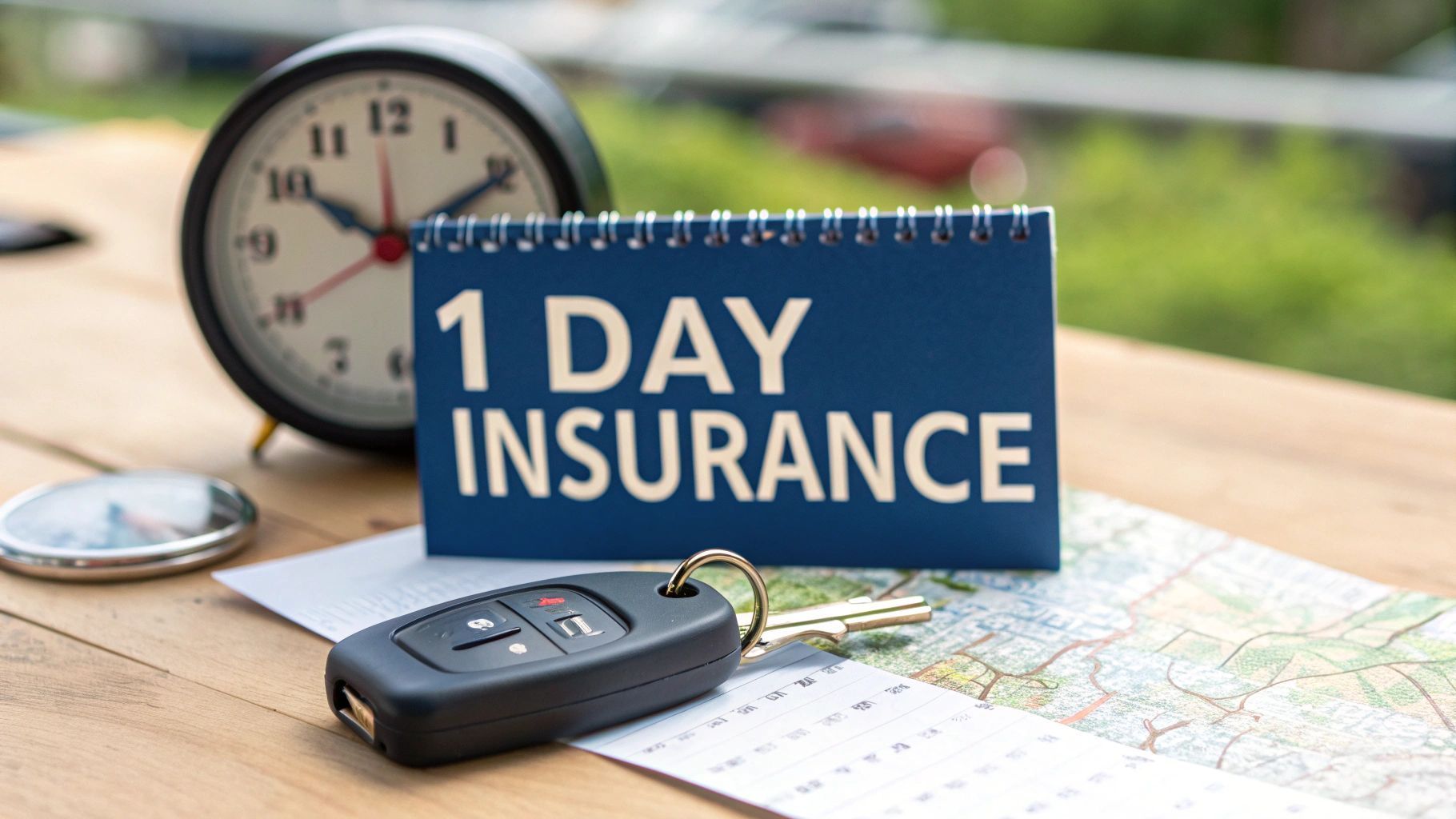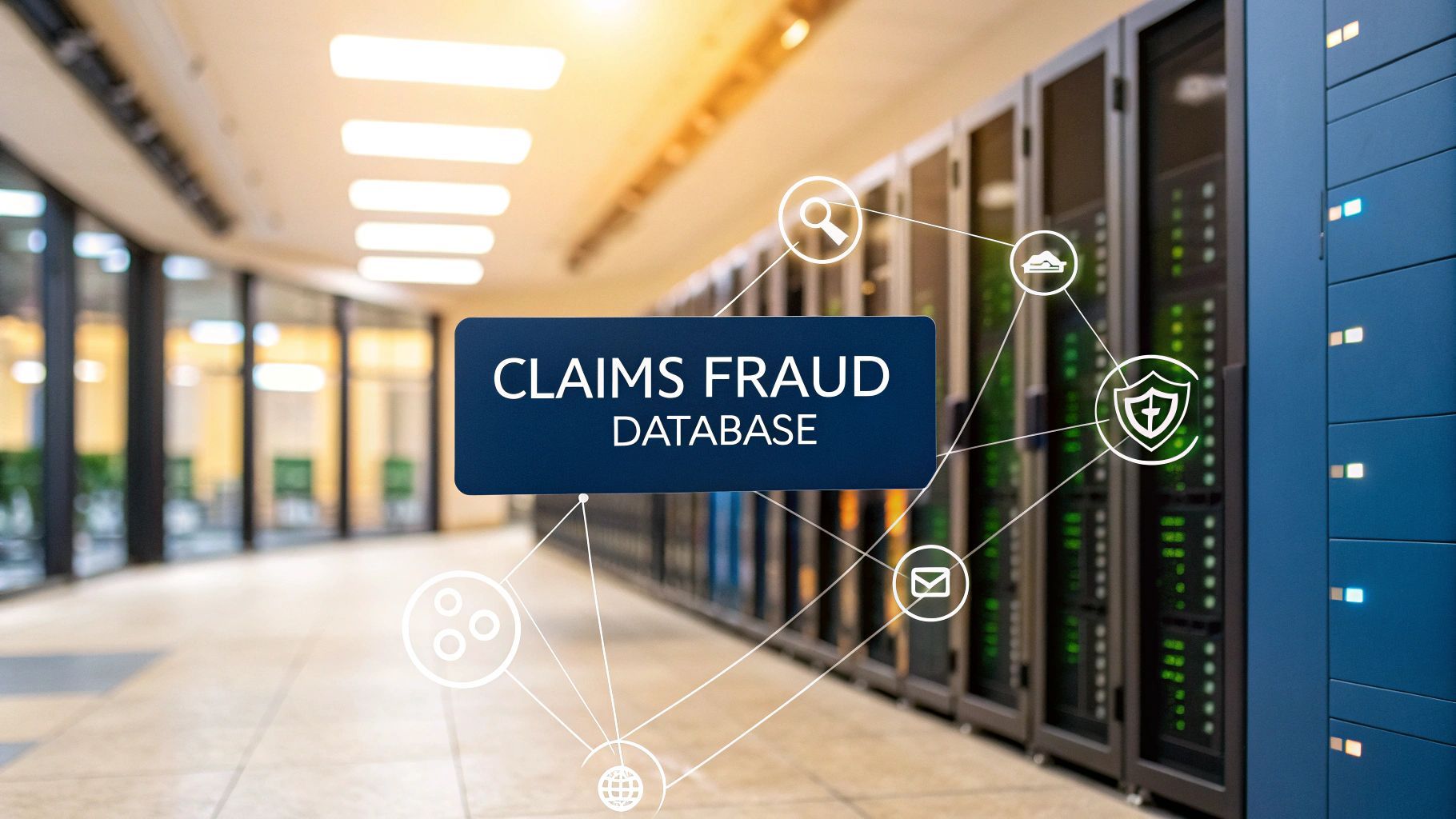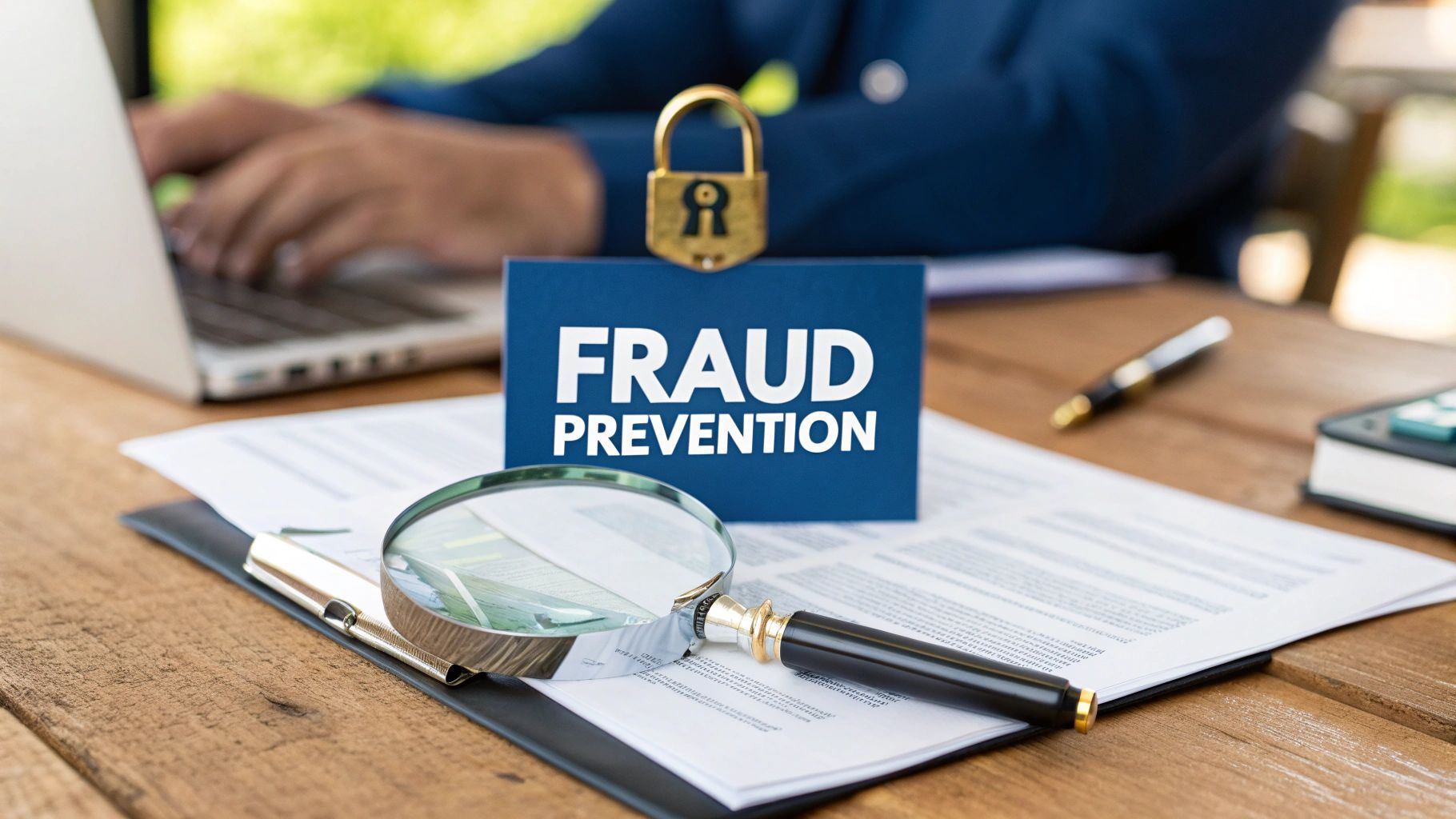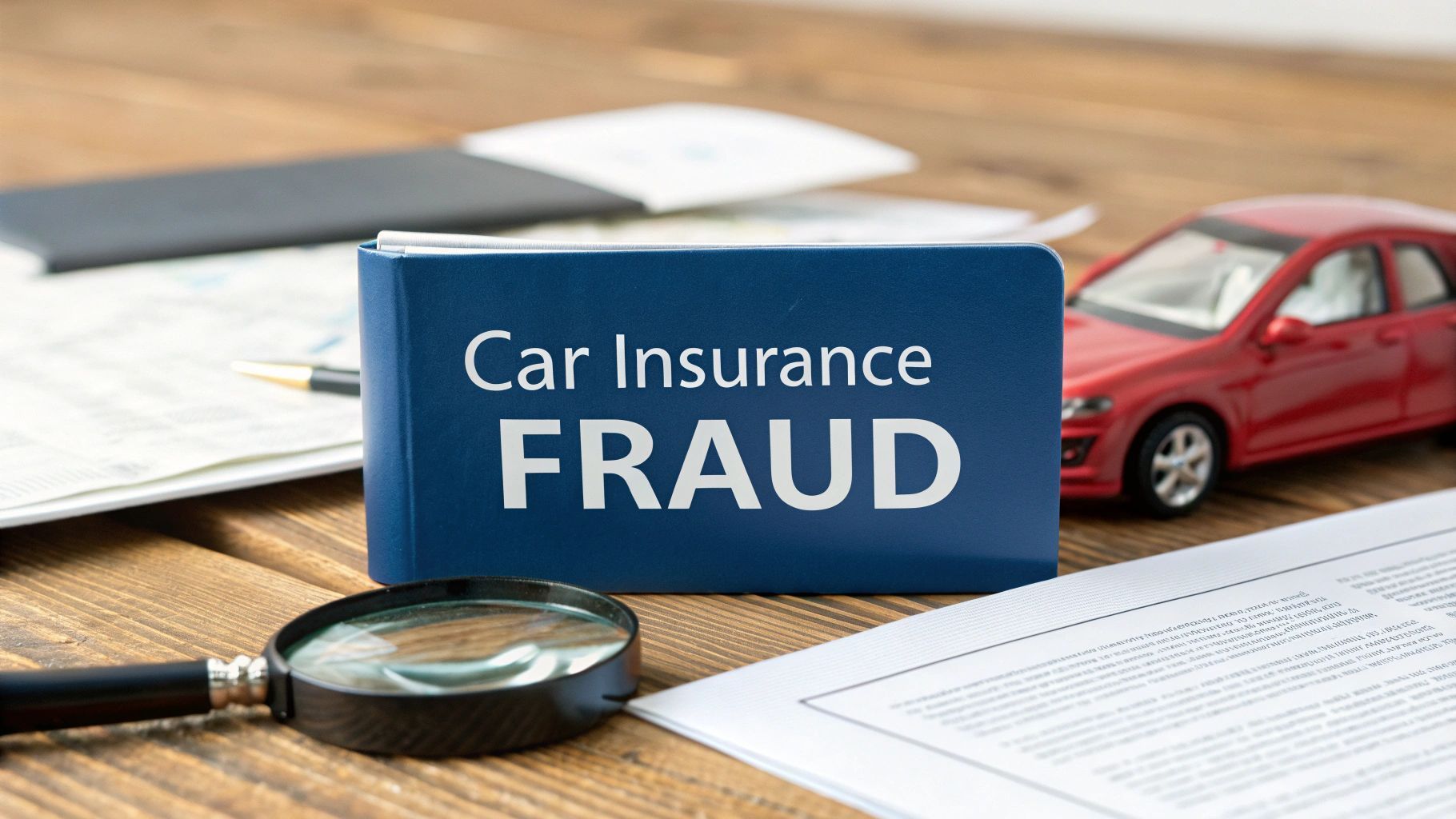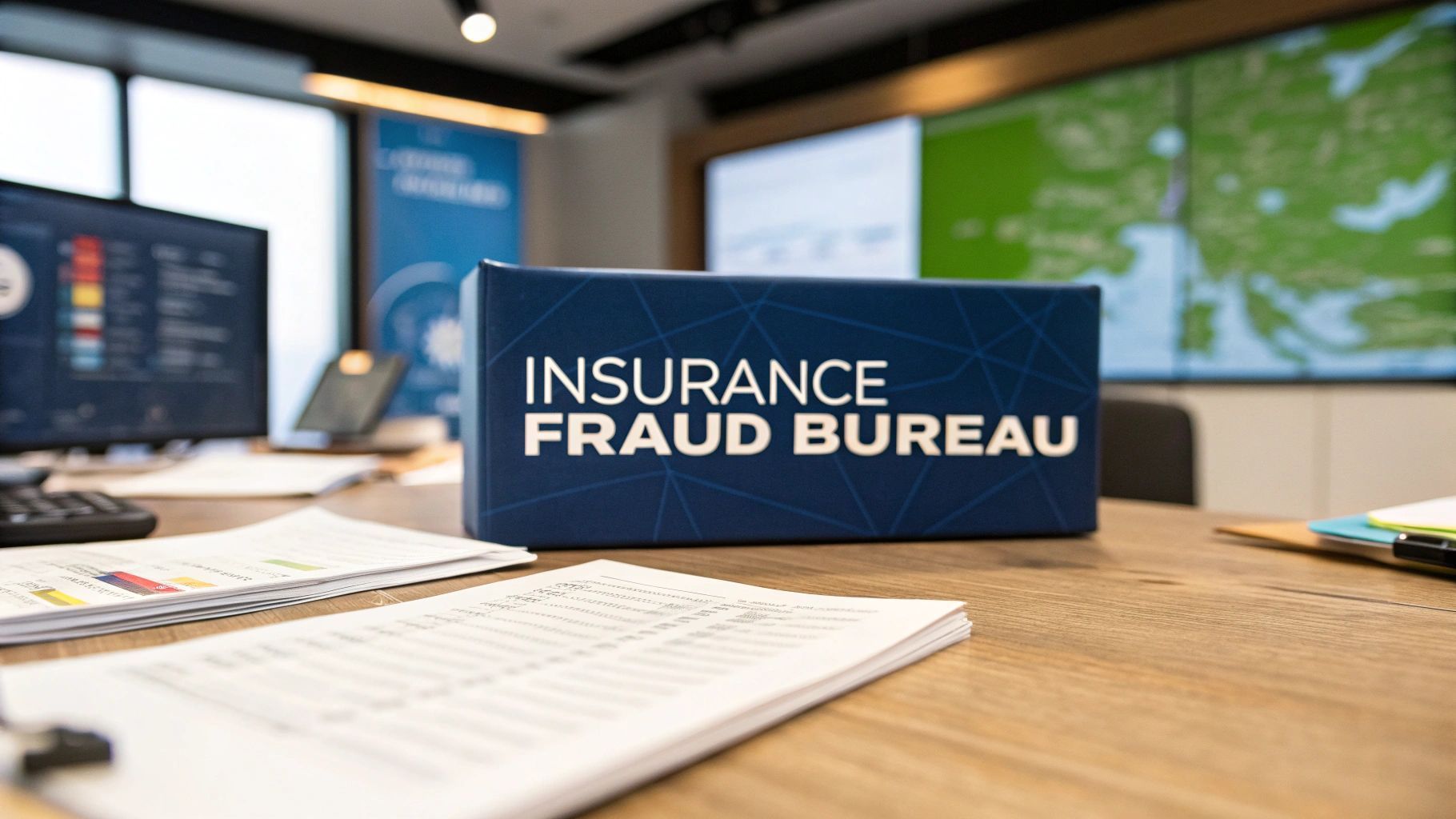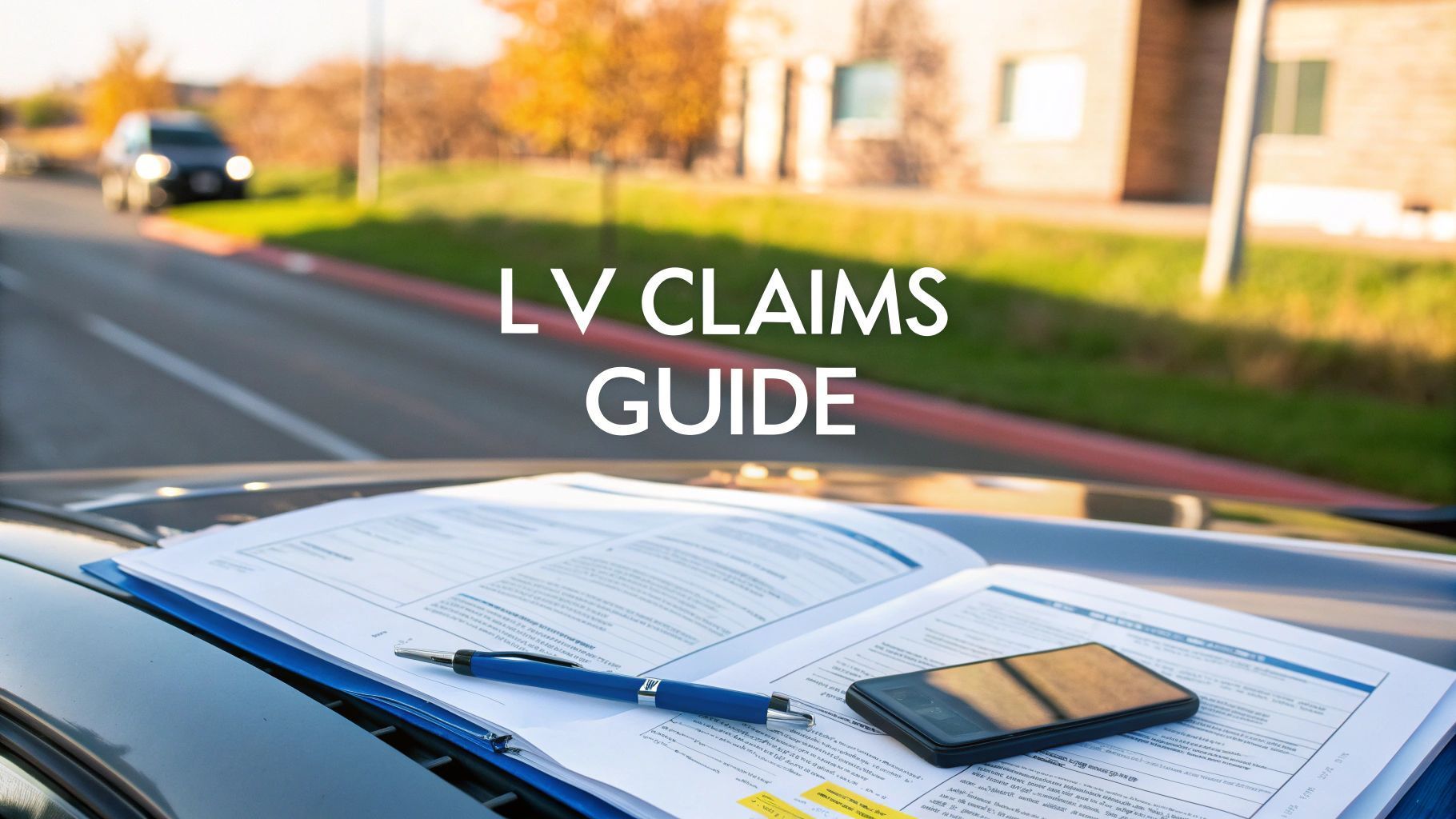How Do No Claims Bonus Work? A UK Driver's Guide
A No Claims Bonus (NCB) – sometimes called a No Claims Discount – is one of the simplest and most effective ways to lower your car insurance premium. Think of it as a reward from your insurer for being a safe, claim-free driver.
For every consecutive year you drive without making a claim you earn a discount that gets applied to your policy the following year. It’s a straightforward system that recognises and rewards lower-risk drivers with cheaper insurance.
Understanding Your No Claims Bonus

While the idea behind an NCB is simple its financial impact can be massive. It’s a powerful incentive to drive carefully and avoid situations that might lead to a claim. In fact, your No Claims Bonus is probably the single most valuable tool you have for keeping your annual insurance costs down.
The whole system is built on provability. You keep your claim-free status by avoiding incidents or crucially by being able to prove you were not at fault if an accident does happen. This is why having solid, verifiable evidence is becoming so important for drivers today.
The core idea is that a driver with a clean record presents a lower risk to the insurer. This lower risk is passed back to you as a financial reward, reducing what you pay each year.
How Your NCB Builds Over Time
Your NCB accumulates year after year and the discount gets bigger with each claim-free period. Although the exact percentage can vary between insurers the progression usually follows a fairly predictable pattern designed to reward long-term good driving.
Even a single claim can put years of accumulated discounts at risk which is why it’s so important to understand the rules. For more detail on common insurance queries our frequently asked questions page has some clear answers.
To give you a better idea of what to expect here’s how the discount typically grows.
Typical No Claims Bonus Discount Progression
This table shows how the discount can increase with each claim-free year, illustrating the real financial benefit for careful drivers.
| Years of No Claims | Average Discount (%) |
|---|---|
| 1 | 30% |
| 2 | 40% |
| 3 | 50% |
| 4 | 60% |
| 5+ | 65% - 75% |
As you can see the savings quickly add up, making that NCB incredibly valuable.
Drivers in the UK can typically earn a bonus for up to nine claim-free years which often translates into the maximum discount available. This system really does reward careful driving because just one at-fault claim can reduce or even completely reset your bonus, causing a sharp spike in your premium.
The True Cost of Making a Claim
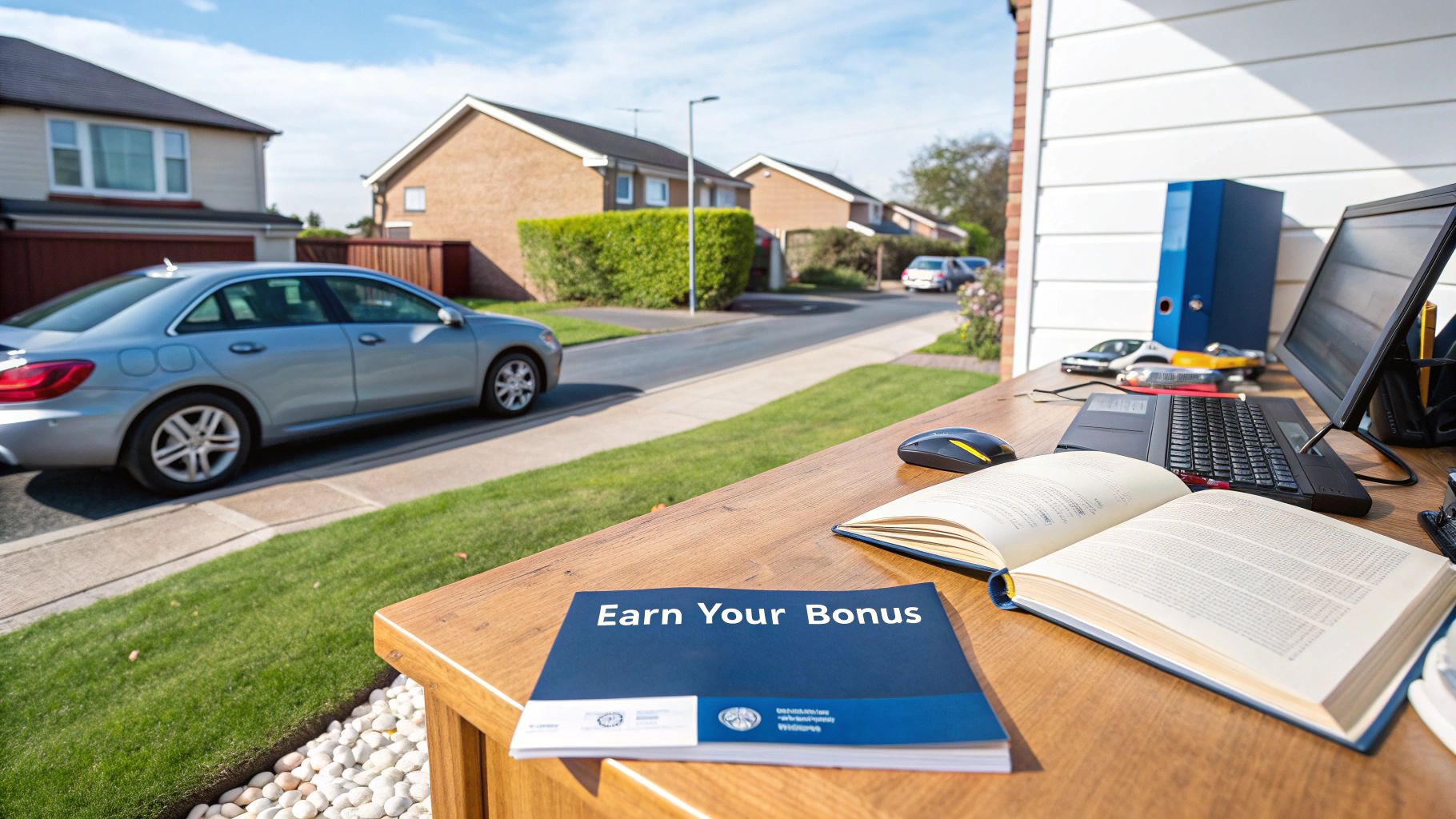
Making an insurance claim might seem like the obvious thing to do after an accident but the financial aftershock can linger for years. The true cost is not just the excess you have to pay upfront; it’s the damage a single claim can do to years of careful driving history, hitting you right where it hurts: your renewal premium.
Think about a minor scrape in a supermarket car park. It’s a classic scenario. The damage might only be a few hundred pounds to fix but the decision to claim can trigger a much bigger financial penalty down the line. You only really see the true impact when that renewal notice lands on your doormat.
When you lose your No Claims Bonus (NCB) insurers suddenly view you as a higher risk no matter the circumstances of the incident. This perception translates directly into significantly higher premiums, not just for one year but often for the next three to five years as you slowly rebuild your claim-free record.
The Long-Term Financial Burden
So the critical question becomes: is the cost of the repair worth more than the accumulated value of your NCB? More often than not the inflated renewal quotes you'll face for several years can completely dwarf the initial repair bill. That small incident suddenly becomes a very expensive, long-term problem which is why even a legitimate claim can feel like you are being penalised.
A small claim for a £500 repair could end up costing you thousands in increased premiums over the next five years. It is essential to weigh the immediate fix against the long-term financial damage.
This hidden cost is a massive factor in how a no claims bonus influences driver behaviour. Understanding this financial trap is crucial. In fact, research shows that even a minor incident can create a hidden financial burden of over £3,000 in five years through lost discounts, higher premiums and excess payments. You can read more about these findings on the true cost of minor claims .
This is the reality at the heart of the insurance model. The system is built to reward provably safe drivers and financially penalise those who make claims, especially when fault cannot be clearly disproven. The whole structure is designed to make you think twice about claiming for minor dings and to underscore just how valuable a clean driving record really is.
How Claims Impact Your NCB Status
So you’ve had a bump. How does that affect your precious No Claims Bonus? Insurers use what’s known as a ‘step-back’ system and frankly it can feel pretty brutal.
Making a single at-fault claim can wipe years off your NCB in an instant. Imagine building up five years of careful, claim-free driving only to see it knocked back to just two. It is a gut punch that erases your progress and sends your premium shooting up.
The Murky Waters of 'Fault' vs 'Non-Fault' Claims
This is where things get tricky. The difference between a ‘fault’ and ‘non-fault’ claim is critical but it’s a concept that catches a lot of drivers out.
A claim is labelled as 'fault' if your insurer has to pay out and cannot get all of that money back from someone else. It doesn’t automatically mean you caused the accident. This is where the burden of proof becomes absolutely central.
Here's the kicker: even if you are 100% blameless for an incident your claim could still be registered as 'fault' if your insurer cannot prove it and recover their costs from the other party's insurance. That directly hits your NCB.
This focus on provability creates a huge headache for drivers. Without rock-solid evidence it often boils down to your word against theirs. This uncertainty is exactly why so many genuine non-fault incidents end up recorded as fault claims, unfairly penalising innocent drivers.
The infographic below shows just how quickly an NCB builds up – and what you stand to lose.
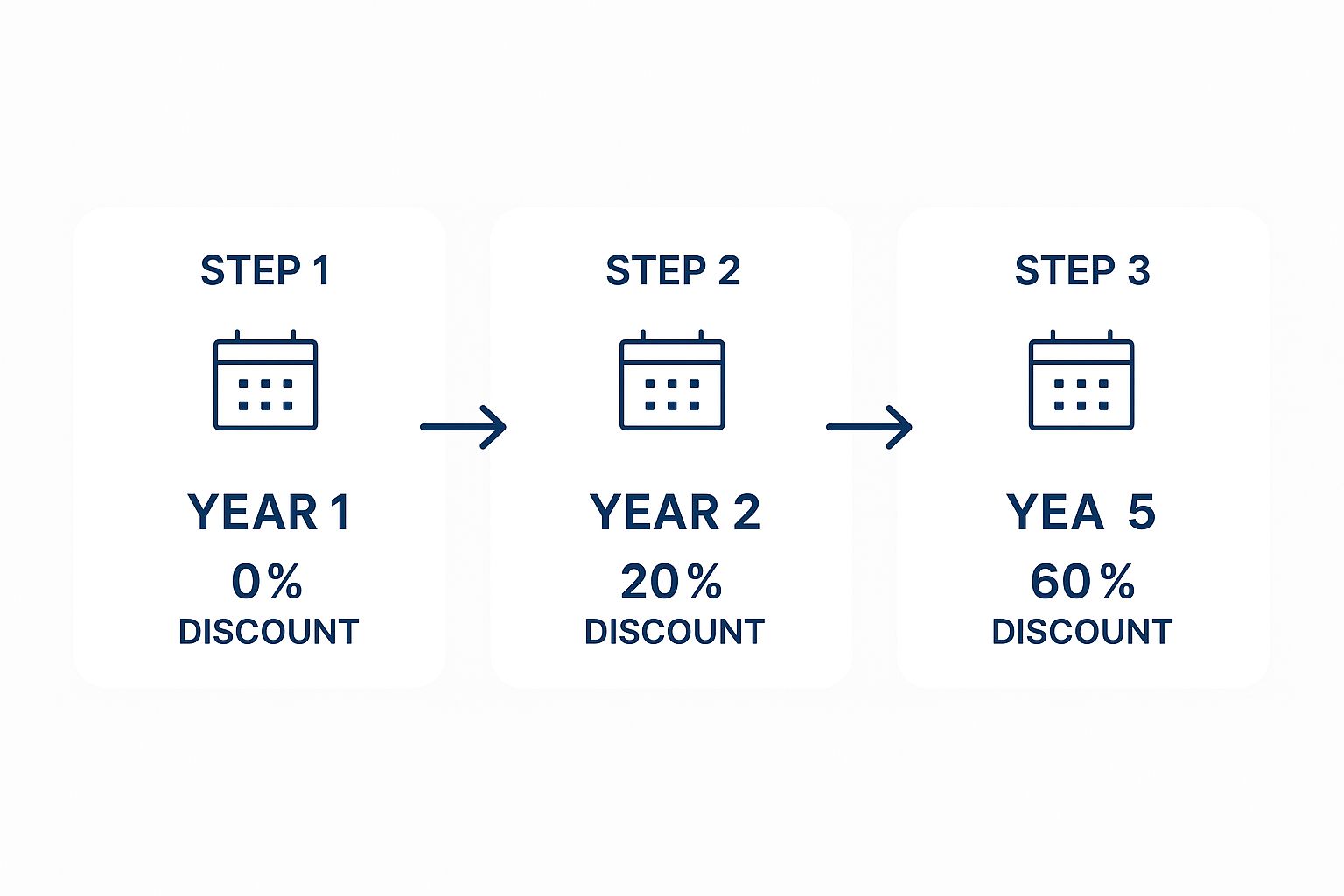
As you can see the financial upside of a clean record is massive, with discounts climbing as high as 60% after five years.
This is why having indisputable proof is no longer a nice-to-have; it is a necessity. Dashcam footage, witness details and clear photos from the scene can be the single thing that separates preserving your bonus from facing a painful premium hike.
It is also worth getting familiar with the reasons why your insurance company might refuse to pay a claim which often comes back to a lack of verifiable proof. On top of that, the rise of "crash for cash" scams makes insurers extra cautious placing an even greater burden of proof on legitimate claimants.
Should You Protect Your No Claims Bonus?

It’s that time of year again—your car insurance renewal lands in your inbox. Alongside your new premium your insurer will likely offer No Claims Bonus (NCB) Protection as an optional add-on. But is it just a clever upsell or a genuinely wise investment for your peace of mind?
Think of NCB Protection as a safety net. It allows you to make one or sometimes two at-fault claims within a set period (usually a few years) without seeing your hard-earned discount percentage vanish. It’s important to remember it doesn’t stop your base premium from rising after a claim but it does preserve the valuable percentage discount you’ve built up over the years.
For a driver with a maximum bonus the small annual fee for protection often pales in comparison to the potential premium hike from a single at-fault claim. It’s like taking out insurance on your insurance discount.
A Cost-Benefit Scenario
Let us break down a realistic situation to see how this plays out in the real world.
- Your Policy: You have a full five-year NCB, giving you a hefty 65% discount on what would be a £1,000 premium. Your price is £350 .
- The Add-On: You add NCB Protection for an extra £40 a year.
- The Incident: You have a minor bump in a car park and it is your fault. Without protection your NCB could plummet to just two years, slicing your discount to 40% .
- The Financial Hit: Your next premium, which will likely be higher anyway because of the claim, would now only get a 40% discount instead of 65%. This could easily add £250-£300 to your renewal cost and that higher price will stick around for several years.
In this case that £40 investment would have saved you a significant amount of money and stress.
Protecting your NCB is often a smart financial move if you have four or more years of claim-free driving. The relatively low cost of protection can shield you from a much larger, multi-year financial penalty if you have an accident.
Ultimately the decision comes down to your personal appetite for risk. If you’ve built up a substantial bonus protecting it feels like a sensible strategy, especially with the rising costs of insurance fraud affecting everyone’s premiums.
Insurers are constantly looking for ways to manage their expenses and understanding how they value provability gives you an insight into their thinking. You can learn more about how insurers are trying to reduce claims costs by up to 30 percent and see why they put such a high price on verifiable evidence.
How Fraud and Market Costs Can Still Hit Your Wallet
Your No Claims Bonus is your best defence against rising insurance costs but it is important to remember it does not operate in a bubble. The final price you pay is also shaped by much bigger market forces, things that are completely outside of your control as a driver. This is where the real-world value of a protected NCB really shines.
You might have a full discount but then your renewal quote comes through and it has gone up. It’s frustrating but it’s not necessarily a reflection on your driving. It’s more likely the rising tide of costs washing over the entire UK insurance industry. Things like spiralling repair bills, shortages of vehicle parts and general inflation are pushing the base cost of insurance upwards for absolutely everyone.
The Hidden Costs We All End Up Paying
A huge driver behind these rising costs is insurance fraud. Organised scams, especially 'crash for cash' schemes where criminals deliberately cause accidents with innocent motorists, cost the industry hundreds of millions of pounds every single year. These are not just an insurer's problem; those losses inevitably get passed on to all of us through higher premiums.
This is why proving any claim is so critical. Insurers have to be incredibly vigilant against fraud which means even legitimate claims face intense scrutiny. Your NCB acts as a crucial shield here, making sure you get the biggest possible discount off a base premium that’s already been inflated by these outside pressures.
Even with a 50% No Claims Bonus your premium can still rise if the underlying cost of insurance goes up. Your NCB protects your discount, not the base price itself.
These market-wide financial pressures are very real. Recent data shows just how tight things are with the UK motor insurance market’s combined ratio expected to rise. This means insurers might soon pay out as much as £1.07 in claims and expenses for every £1.00 they earn in premiums, a clear sign of just how much costs are escalating. You can read a bit more about these insurance market pressures and their impact.
At the end of the day you cannot control industry-wide fraud or inflation. But you can control your own claims record. Keeping a clean driving history and being able to prove it is the single most effective way you have to fight back against these rising costs and keep your own insurance as affordable as possible.
Your No Claims Bonus Questions Answered
The small print around a No Claims Bonus can be a real headache. It’s one of those areas where drivers have plenty of questions but often find the answers are buried in jargon-heavy policy documents. Let us clear up some of the most common queries so you can get the most out of your hard-earned discount.
A big one is whether you can use your NCB on a second car. The short answer is usually no; you cannot apply a single No Claims Bonus to two cars at the same time. Your bonus is tied to one policy on one vehicle because it reflects your personal claims history on that specific policy.
However, some insurers might offer an introductory discount or a ‘mirrored’ NCB on a second car policy if you’ve got a long, clean record. It’s definitely not standard practice though, so you’ll need to ring up your insurer and ask them directly if it’s something they can do for you.
What if I Take a Break from Driving?
Life happens. Maybe you’re working abroad for a few years or just don’t need a car for a while. So what happens to your NCB if you stop driving? Well it doesn’t last forever if you’re not insured. Your No Claims Bonus will typically expire if you go without car insurance for more than two years .
If you let your policy lapse for longer than that you will almost certainly lose your accumulated bonus. When you come back to driving you’ll probably have to start building it up again from scratch.
It’s always worth checking the exact terms with your last insurer if you’re planning a long break. Their rules on NCB validity can vary and it’s better to know where you stand beforehand.
Will a Windscreen Claim Affect My NCB?
This is a classic point of confusion. You get a chip in the windscreen, you get it fixed – does that mean your NCB is toast?
In most cases making a claim for a windscreen repair or replacement will not affect your NCB . This is especially true if you have comprehensive cover which usually includes specific protection for windscreens.
That said always check your policy wording to be certain. While a windscreen claim might not reduce your discount percentage you’ll likely still have to pay an excess for the repair. It’s also worth remembering that the claim will be logged on your insurance history which could be a small factor for insurers when they calculate your renewal premium next year.
At Proova , we believe in the power of clear, verifiable proof to protect both drivers and insurers. By authenticating your assets before a claim is ever needed we help eliminate the uncertainty that leads to disputes and unfairly penalised drivers. Secure your assets and protect your claims record by exploring Proova today.



